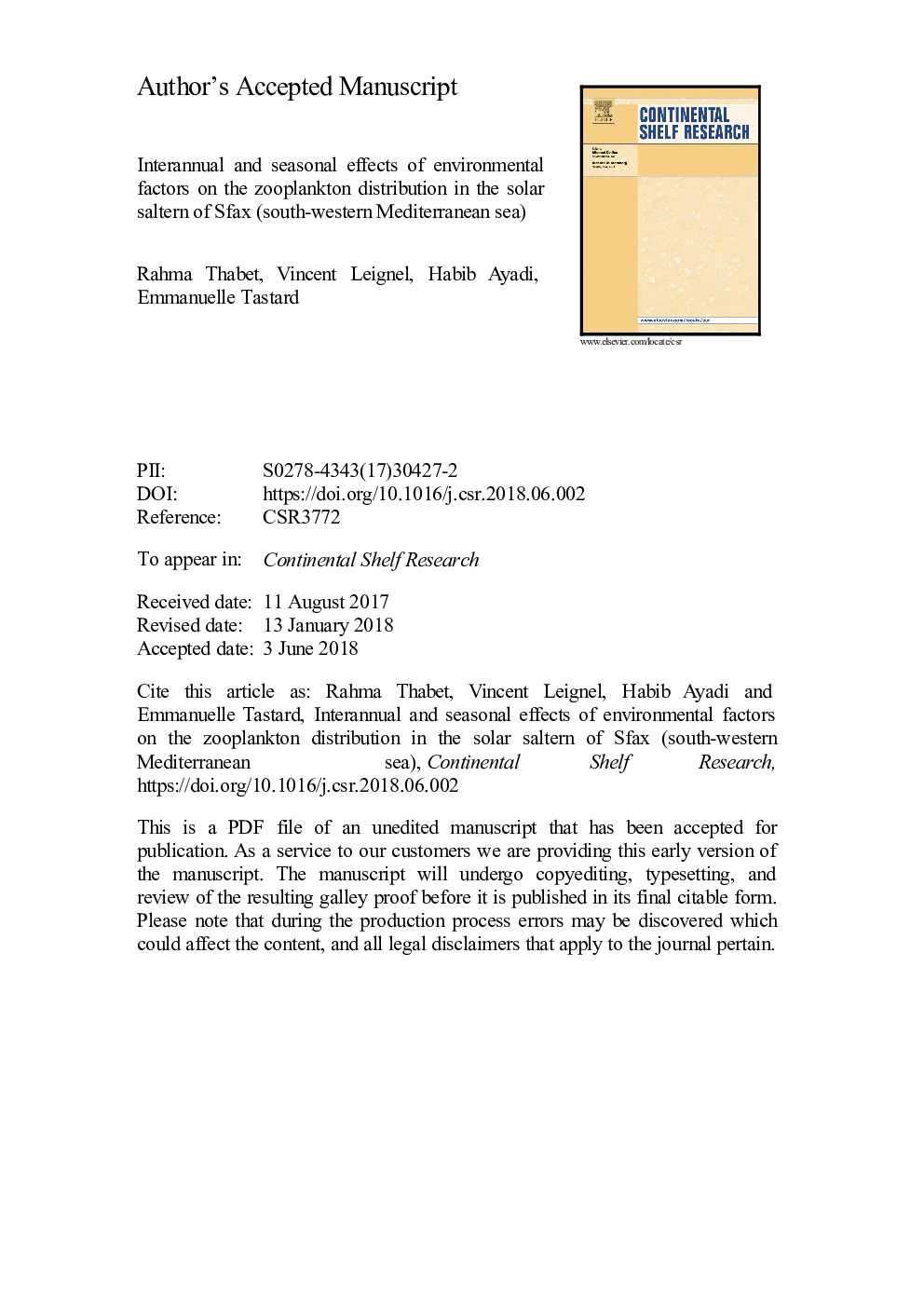| Article ID | Journal | Published Year | Pages | File Type |
|---|---|---|---|---|
| 8884002 | Continental Shelf Research | 2018 | 41 Pages |
Abstract
Understanding interannual variation of zooplankton communities is a mean for assessment and monitoring of aquatic ecosystems. For this reason, we monitored the zooplankton community of the Sfax saltern (Tunisia) during four years (2000-2003). A multivariate method, the “STATICO analysis” was used to investigate the effect of environmental parameters on the abundance, distribution and composition of the zooplankton community according to time, in three ponds with different salinity values. The results revealed some seasonal and interannual variations of the zooplankton community. Copepods, which were the most abundant zooplankton species, were clearly influenced by the nutrient content variation (higher in spring and autumn) and the anthropogenic pollution level in each pond but their distribution was mainly related to salinity changes. In autumn, Oithona nana (Cyclopoida) proliferated in the least salty pond, Microsetella sp. (Harpacticoida) was abundant at intermediate salinity; and Harpacticus littoralis and Bryocamptus sp. (Harpacticoida) proliferated in the saltiest pond.
Related Topics
Physical Sciences and Engineering
Earth and Planetary Sciences
Geology
Authors
Rahma Thabet, Vincent Leignel, Habib Ayadi, Emmanuelle Tastard,
